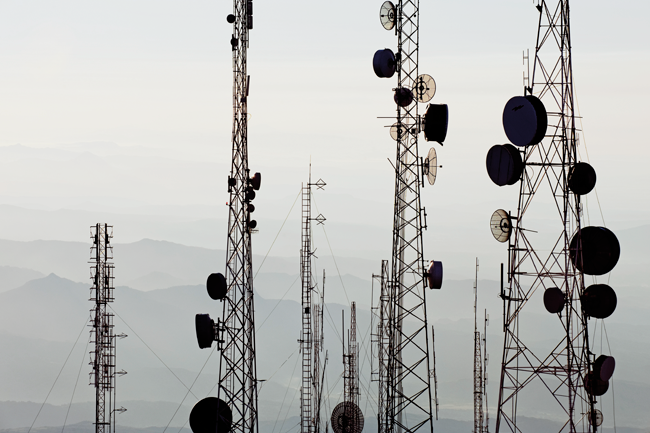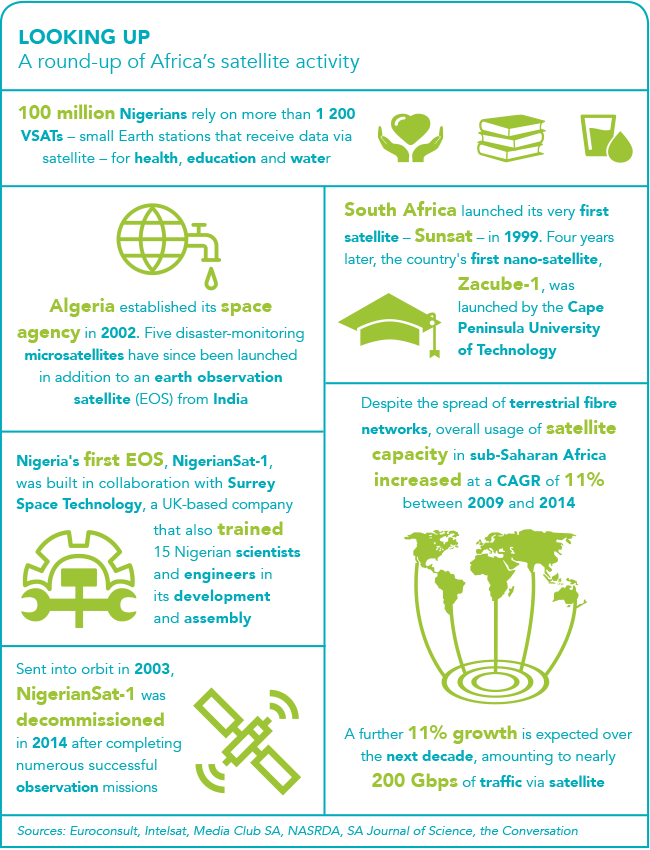The long-disputed claim that satellite could be the answer to achieving universal connectivity on a continent where millions live without access to communications infrastructure is once again emerging at the forefront of discussion, with some even suggesting satellite could be on the way to ousting fibre connectivity from the market.
Technologies seldom heard of in the African market only a few years ago, including high-throughput satellite (HTS) and cross-dimensional multiple access (Mx-DMA), are swiftly being introduced. And with this intensive investment, the continent’s satellite industry is being revitalised.
Until only a few years ago, HTS technology was in its relatively early stages everywhere in the world. Today, HTS is coming into its own across Africa and fuelling consumer and enterprise satellite services.
Earlier this year, Intelsat made headlines when it launched its very first new-generation Intelsat EpicNG HTS satellite into service over North and Latin America. By August, however, the company already announced the launch of its second such satellite – the Intelsat 33e – into orbit to serve sub-Saharan Africa. It is soon due to enter into service.
The new technology combines both wide and spot beams with frequency reuse technology and an advanced digital payload to create what Intelsat claims to be ‘unprecedented’ security and flexibility.
The platform is driving substantial network improvements, with initial customer feedback suggesting an increase of between 165% and 330% in spectral efficiency with ground platforms and modem technologies. That’s in addition to an up to 300% improvement in throughput using next generation antenna technology to connect to the Intelsat EpicNG HTS platform.
‘In all cases, customers and partners report that the platform is meeting and exceeding its performance and efficiency expectations across a range of applications,’ Intelsat states on its website.
The fact that such technology is being launched in Africa as Intelsat’s second market after the Americas speaks to the acceleration in the continent’s satellite industry.
According to Scott Mumford, satellite services head at Liquid Telecom, the heightened emergence of HTS services in Africa is going to have a substantial impact on the connectivity market, and will serve to push down the price of satellite connectivity. ‘There’s a move towards HTS satellites that utilise high-power spot beams with a smaller geographical coverage,’ he says.
‘These have mainly been in the Ka-band frequency range [28 GHz–30 GHz] with a couple of new exceptions. They’re certainly going to have a big impact in the market, especially the non-Ka-Band ones, as these will offer much higher service availability levels and bring down the price of connectivity generally across the continent.’
For its own part, Liquid Telecom has been pushing forward with partnerships to boost its satellite operations. Through its collaboration with Newtec, the former is making use of Newtec’s new Dialog platform, and has become the first in Africa to roll out services using Newtec’s Mx-DMA return technology.
Mx-DMA technology improves return efficiency through real-time network-wide adjustments; maintains a flexible network (such as by allowing real-time bandwidth allocation); ensures low jitter and delay rates; and results in a doubling of the transponder throughput using the same bandwidth.
‘This is a real step forward as it provides the equivalent of an SCPC [single channel per carrier] link, but with the ability to move the bandwidth that is not being used within the customer network.
‘This technology enables us to provide hundreds of sites with a high-speed upload to the central site but at a fraction of the cost, as we can size the network to allow anywhere from 1% to 100% of the sites to have high-speed access simultaneously. And in instances where less than 100% is sized, we can move the bandwidth to any site, anywhere in the network, dynamically based upon demand,’ says Mumford.
Liquid is also looking to implement the new technology in other network environments – specifically around the security sector as well as centralised CCTV and security management centres. What’s more, it’s investigating other ways in which satellite can improve different sector services.
For example, the company is working with a number of international financial institutions regarding point-of-sale and ATM connectivity, with a view to each having their own single managed network.
‘This will equate to mass site volumes and very low cost in a landscape that is still currently dominated by the MNOs [mobile network operators],’ says Mumford.
The Dialog platform has piqued interest across Africa, with Arabsat also recently concluding an agreement with Newtec for the use of its Dialog technology in Arabsat’s Middle East and Africa-focused operations.
While the satellite connectivity market has typically been dominated by enterprise customers, iWayAfrica has decided to target the household and small business market head on. As of October, iWayAfrica will be rolling out a service dedicated to this market.
Known as Jola, the service will offer individual households and small businesses managed satellite services with an innovative matrix approach, with an emphasis on ensuring flexibility for customers. Users will have the option of mix-and-matching four speeds and eight monthly data allowances to create a bespoke service plan, the entry level version of which starts at US$65 per month.
According to iWayAfrica, developments in pricing plans mean that satellite is becoming a viable alternative broadband access channel across Africa, particularly so outside of cities.
‘Consumers and businesses both require internet on demand when they want it where they need it at the price they agreed to pay for it,’ says Michele Scanlon, new business development representative at Gondwana International Networks – parent of iWayAfrica. ‘Satellite meets all of those criteria, making it an effective channel for connecting Africa.
‘Today, satellite connectivity could be considered prohibitive in urban areas. However, outside of the cities, satellite today is now a viable option, whereas previously it would have been considered too prohibitive for that user segment.’
Looking to the future of the satellite industry across Africa, the sector is gearing up for an exciting time as these new technologies become ingrained – shaking up the market and encouraging more competitive services.
The past years have seen accelerated investment in satellite and the associated technology covering Africa, and the trend continues to pick up pace, with no end in sight. Today, the majority of satellite providers serving Africa have already launched HTS technology (or plan to do so), and numerous providers can boast full geographical coverage of the continent.
Gondwana chief technology officer Guy Schalker believes that in the near term, HTS technology will serve to drastically change efficiencies and price points in the market.
‘The arrival of competitive HTS will definitely change the landscape for VSAT operators in Africa,’ he says.
Hellas Sat agrees, saying the price implications of HTS technology flooding the market will be the single-biggest characteristic of the satellite industry in Africa in the short term.
‘The critical factor for Africa will be the pricing compared with broad coverage areas,’ says Vicky Panagiotopoulou, OU services product manager at Hellas Sat.
‘More and more satellite operators including Hellas Sat have announced plans for HTS covering sub-Saharan Africa, thereby bringing down the cost per terminal while upgrading the traffic rates.’
Looking ahead, Mumford anticipates further advances in satellite technology becoming a reality within the next five years – advances, he believes, that could potentially even lead to fibre connectivity becoming largely redundant.
‘Constellations of LEO [low Earth orbit] satellites are scheduled to be launched within the next five years, with a big advancement in antenna technology. These flat phased-array antennas in combination with the LEO satellites will bring gigabit speeds, with low latency anywhere on the planet, for a fraction of the current cost,’ he says.
‘This technology may even bring about the end of fibre to the home and leave fibre as a trunking-only technology.’



